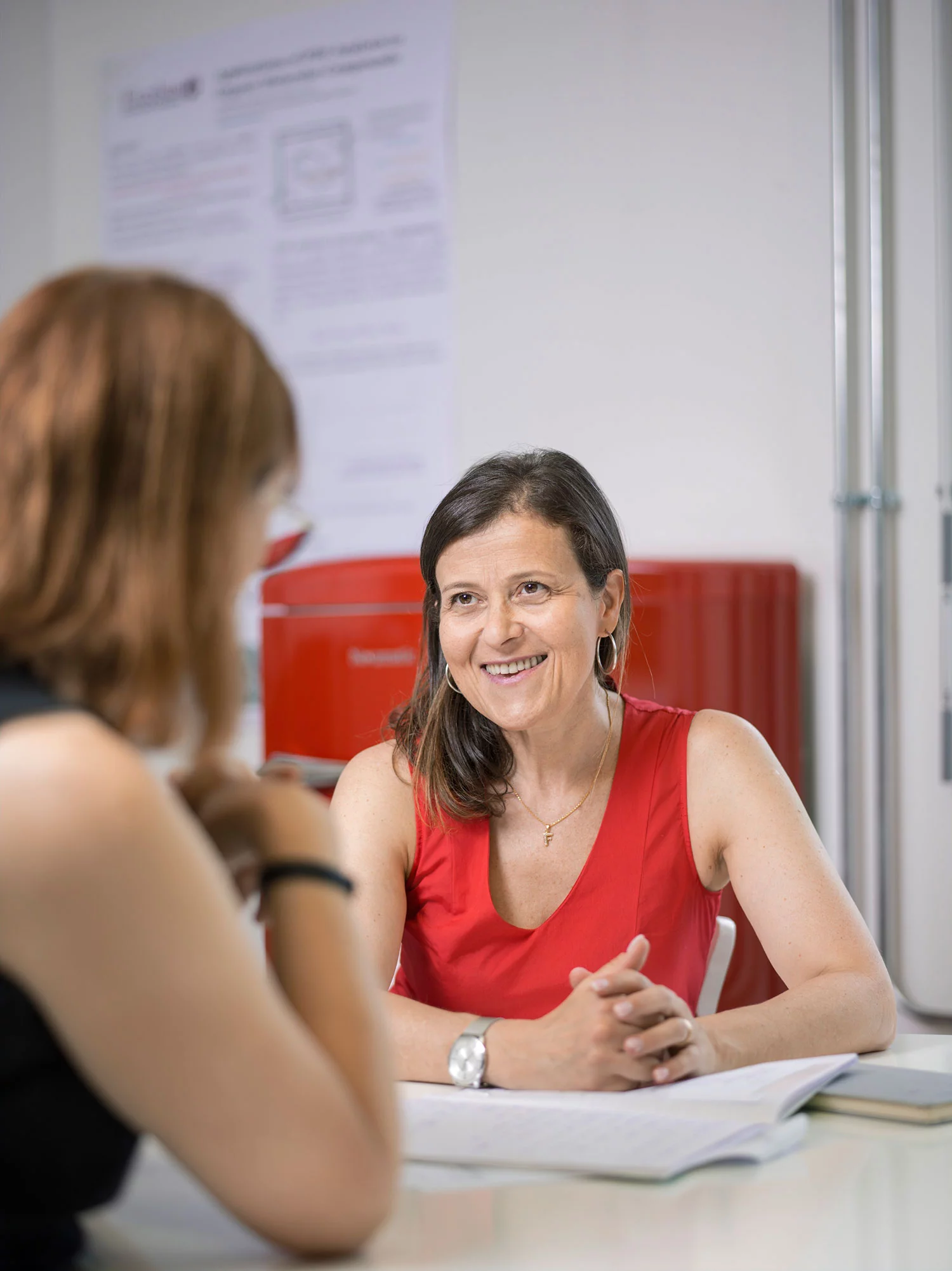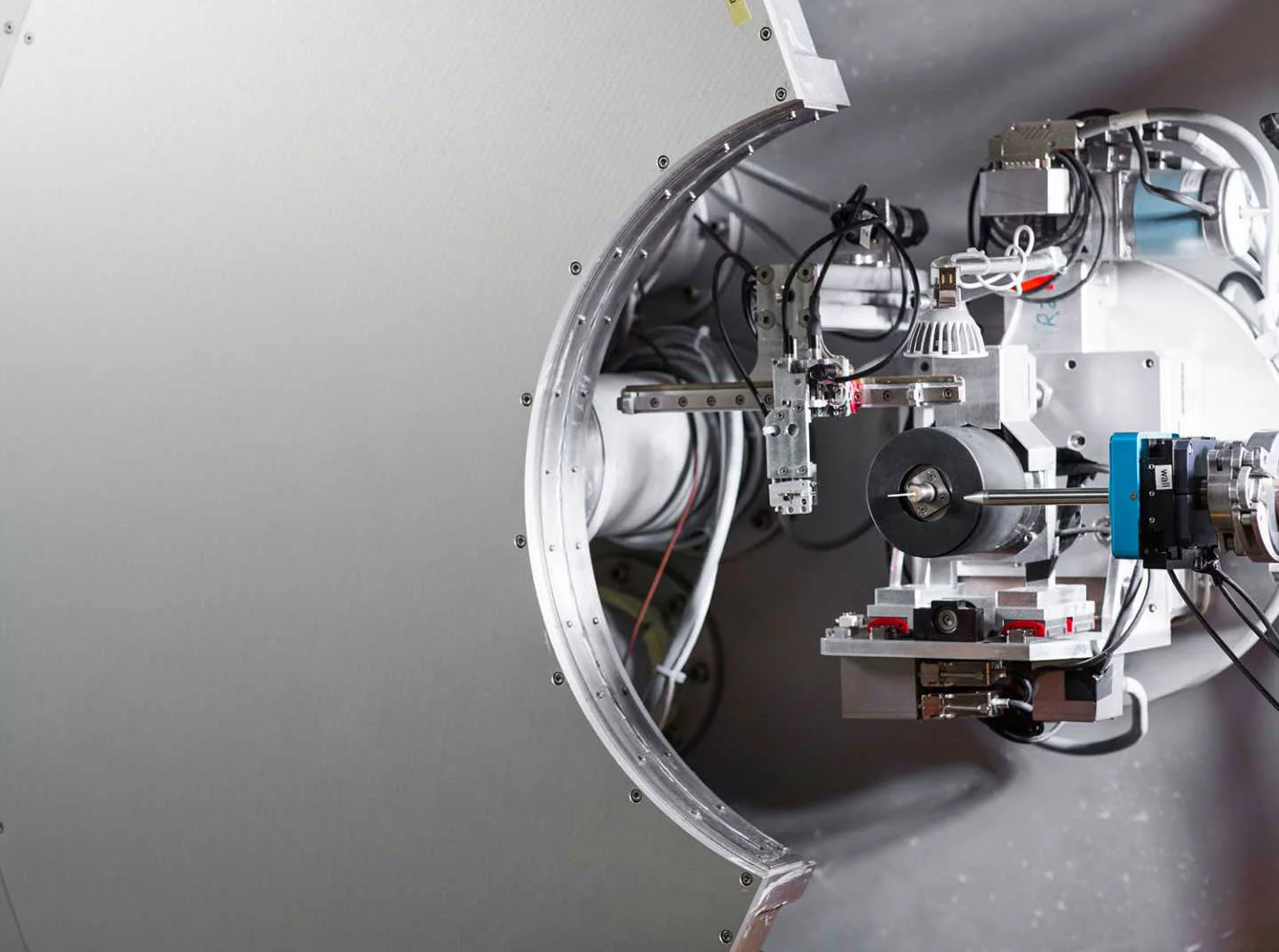Fabia Gozzo is no woman for the comfort zone. First she made a beamline at the Swiss Light Source SLS of the Paul Scherrer Institute PSI into one of the world's leading facilities. Today she is making her knowledge available to industry with her spin-off.
In spring 2012 Fabia Gozzo faced an important decision: security or risk? After 12 years, she had resigned from her job at the Paul Scherrer Institute to move to Brussels with her family. Her husband had taken a post as vice president of a company. The two had previously agreed to emigrate if one of them got such a one-of-a-kind offer.
Fabia Gozzo was looking for a job too. Soon she had an offer for a position as laboratory head at a Brussels-based institute for nano- and microelectronics. The position would have been a comparable to the one she had held up to that point at PSI. Then I asked myself: For that, do I want to burden myself with the trouble of this big relocation?
, Gozzo says today. She found the answer was no. And instead, she founded her own firm: Excelsus Structural Solutions.
She had long had the idea of offering her experience in the analysis of material structures, which she had gained at the Swiss Light Source SLS, to the pharmaceutical industry. With the synchrotron light, the smallest devation from the desired solid structure in drugs can be detected – so their effectiveness can be improved. Gozzo and PSI signed an agreement for regular commercial use of a beamline at SLS. Now all Gozzo needed was customers. She gave herself two years to see if it would all work out.
It did work out. Six years later, Fabia Gozzo, an elegant 53-year-old wearing spring clothes and a necklace with a dangling F
, sits in deliveryLAB, the first building of Park innovaare right next to PSI. Around the conference table with Gozzo, with notebooks in front of them like their boss, sit her three employees: Mathilde Reinle-Schmitt, Pam Whitfield, and Mickaël Morin. One week ago they returned from the USA – all but Morin, who kept watch at the office – where Excelsus hosted a conference on structural analysis of amorphous, that is, non-crystalline, drugs. Pharmaceutical agents in crystalline form are more stable yet sometimes are insufficiently effective. Here Gozzo sees a new business segment.
In this meeting, therefore, she and her team are considering which researchers they want to get involved soon to set down standardised procedures for this new application area. For a Swiss pharmaceutical company, they are about to conduct a first measurement of this kind at the Diamond Light Source, a synchrotron near Oxford.
Let's repeat the measurements three times
, suggests Senior Scientist Pam Whitfield. Then we'll be completely sure.
That's really not the only criterion
, Gozzo says. Beamtime is expensive. Top quality is a must; however, redundancy at the customer's expense is a no-go. In the end, though, because it was a question of using a new method, the team decided to do three tests after all. Excelsus will assume the excess costs. Gozzo explains the risky decision: We're offering top-level technology. If we don't get moving, in two years we'll be a has-been.
With iron discipline
Fabia Gozzo admits she may be profoundly scatter-brained: Glasses and keys are constantly mislaid. But where it counts, the physicist is all there. Once you've decided on something, further doubts are pointless
, she says. That's why I'm on the go at 200 kilometres per hours.
Once you've decided on something, further doubts are pointless.
This idiosyncrasy helped Gozzo, a native Italian with a Swiss passport, when she came to PSI in 1998. After physics studies in the southern Italian city of Bari and her dissertation at EPFL in Lausanne, she had done postdoctoral research at the synchrotron in Berkeley, California, and afterwards co-developed a spectromicroscope with which the newest Intel computer chips could be examined for the slightest impurities. For the construction of SLS, Gozzo returned to Switzerland. Her job: to spur on commercial use of the brand-new synchrotron. It was too early for that, though
, Gozzo recalls. The researchers were still busy getting the facility up and running.
So the SLS project head asked Gozzo if she could instead set up the SLS experiment station for powder diffraction. Its designated leader had dropped out on short notice. Gozzo agreed, although it was not her special field of expertise. Christoph Quitmann, who came to SLS from the USA at the same time, recalls: Half of the physicists said: Fabia, we have confidence in you. The others said: She doesn't have a clue.
Gozzo built a facility that today is one of the best in the world. Maybe that was thanks to her technical prowess – and her iron discipline.
You also sense this discipline when you hear how Gozzo set up Excelsus Structural Solutions in 2012. After the family's relocation to Brussels, she first worked out of the new flat. In the afternoon, Gozzo's daughter did her homework alongside her. For the actual measurement jobs, she drove her car eight hours from Brussels to PSI and back – in the beginning, the budget wouldn't cover flights. But soon, the customer base grew, and with it Excelsus too. After Gozzo had assembled a small team of PSI postdocs, including Mathilde Reinle-Schmitt, she expanded it in 2017 by recruiting the experienced English scientist Pam Whitfield. She had headed a lab in Canada for investigation of crystal structures for 20 years, and after that a neutron beamline at Oak Ridge National Laboratory in the USA.
Between business and science
Even without Gozzo, who traveled to Brussels every couple of weeks, it eventually got too tight in the Excelsus office, quartered in those days in a postdoc space near SLS. So, in 2016, the troupe moved into deliveryLAB. Now in a more spacious neighbourhood, the firm profits even more from the excellent contact with SLS staff: When a short-term assignment comes in, a time window can almost always be found in which they can make the measurements at SLS.
Fabia Gozzo visibly makes an effort to create a comfortable working climate. The Excelsus office is stylishly furnished with an oval-shaped wooden table, red refrigerator, and red coffee machine. Mathilde Reinle-Schmitt, who is about to become a mother, works part-time at home, as does Fabia Gozzo, who moved to Lausanne with her family at the beginning of the year – again because her husband had taken a new position.
Yet as successful as Excelsus is, the firm is subject to a tough market. With her relatively small company, Gozzo can hardly afford to wait several months for large sums due to delayed payments from customers. On top of that, Excelsus needs to adapt its methods to the latest research. Therefore Gozzo and her staff stand with one foot in business and the other in science: At PSI they conduct commercial measurements, and the rest of the time they run their own experiments and write them up in scientific publications. This also helps them keep one step ahead of the competition in terms of innovation. At conferences, they not only exchange findings with research colleagues, but also make contacts with pharmaceutical industry representatives. In just this way, Mathilde recently landed a good new assignment
, Fabia Gozzo proudly relates.
Gozzo likes this double challenge. If we just went on carrying out standard procedures, it would not only be commercially short-sighted
, she says. It also would simply be no fun for us.
Text: Joel Bedetti



